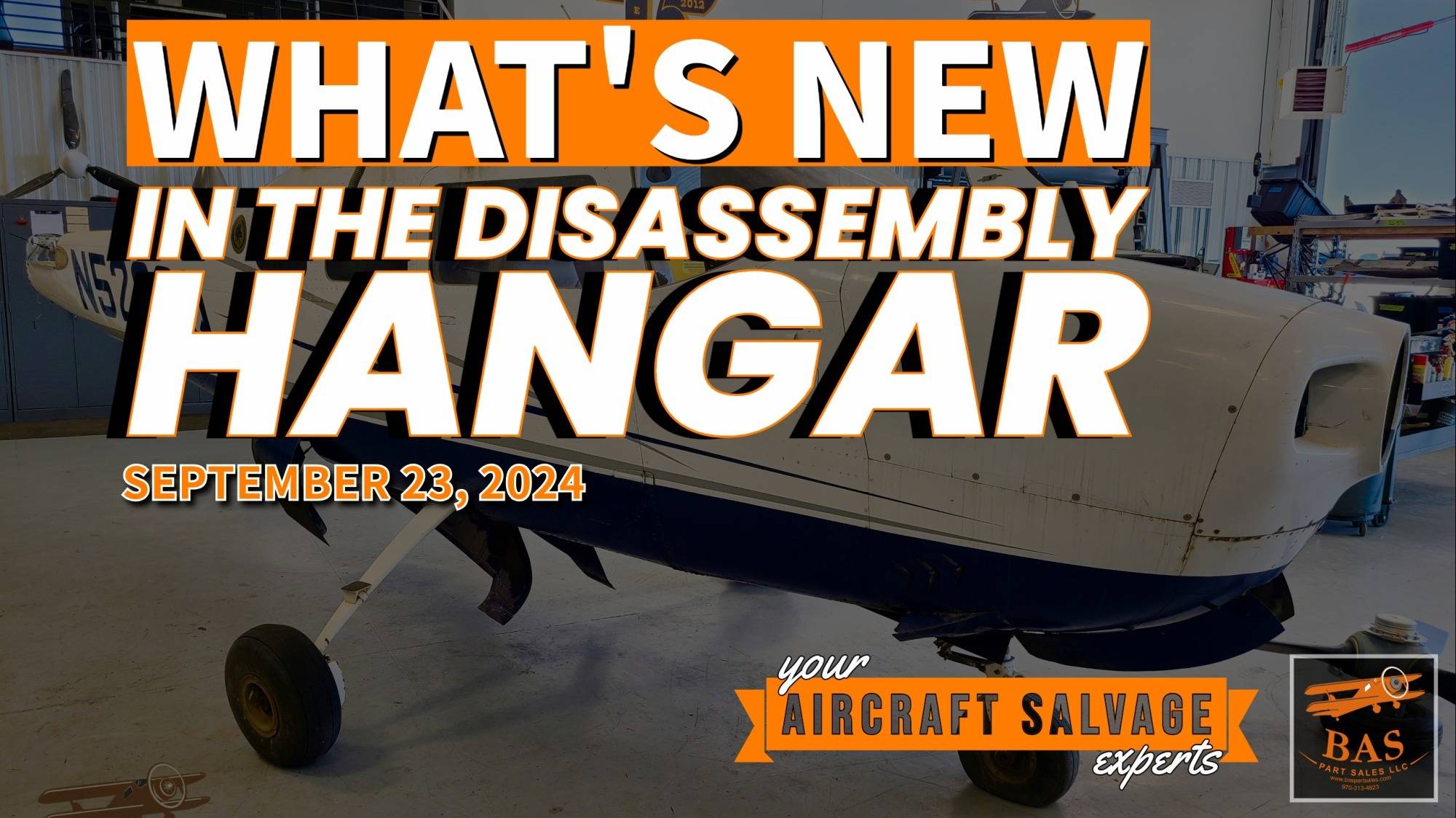Swearingen Aircraft History: A Deep Dive into Aviation Innovation
Posted by Clinton McJenkin on Oct 16th 2024
Swearingen Aircraft, founded by Ed Swearingen in 1959, has a rich history marked by key milestones that have shaped the aviation industry. The company's journey is a testament to its resilience and innovation from its early years of modifying existing aircraft to developing its own aircraft, like the Merlin series and the SJ30.


Early Years and Modification Expertise
Swearingen’s early years focused on modifying the performance and functionality of existing aircraft designs. Rather than designing entirely new planes from scratch, the company initially built its reputation on its expertise in improving existing models. Swearingen’s modifications of the Beechcraft Twin Bonanza (resulting in the Excalibur 800) and the Queen Air stand out. These modifications included incorporating more powerful engines, enhancing cabin access via airstairs, and installing fully enclosed landing gear doors, significantly improving both aesthetics and functionality. The Excalibur modifications, easily identifiable by their distinctive features, became a testament to Swearingen’s engineering prowess. The U.S. Army even modified several of its Swearingens to this upgraded standard. This early experience laid the foundation for Swearingen’s subsequent original designs.
The Merlin Series and the Birth of the Metro
Building on its modification expertise, Swearingen Aircraft designed its first original aircraft, the SA26 Merlin. This pressurized aircraft incorporated design elements from the modified Queen Air and Twin Bonanza, showcasing a blend of Swearingen’s understanding of existing technology and his vision for improved aircraft. The Merlin’s evolution into the Merlin IIA and IIB saw the incorporation of turbine power, employing Pratt & Whitney Canada PT6s and Garrett TPE331 turboprops, respectively. This evolution marked a significant leap forward in terms of performance and efficiency. The culmination of the Merlin line arrived with the all-new SA226-T Merlin III, featuring redesigned wings, landing gear, and a cruciform horizontal tail. This redesign ultimately led to the development of the 19-seat Metro series aircraft, whose maiden flight took place on August 26, 1969. However, financial difficulties hampered the initial production of the Metro, delaying its market entry until after the company was acquired by Fairchild in 1972.
Fairchild Acquisition and Independent Resurgence
The acquisition by Fairchild marked a turning point. While Ed Swearingen remained a 10% shareholder and chairman, the company was renamed Swearingen Aviation Corporation. Despite the integration with a larger corporation, Swearingen continued to innovate. He embarked on further aircraft modification projects, notably a significant upgrade to the Lockheed Jetstar, which involved the installation of new Garrett TFE731 engines and aerodynamic enhancements, dramatically extending the Jetstar’s range. The company also diversified into manufacturing jet engine nacelles and other components for major aircraft manufacturers like Cessna, Gates Learjet, and Dassault, demonstrating its versatility and strong industry relationships.
In 1982, Ed Swearingen reacquired the Swearingen name, restarting his independent company, Swearingen Aircraft Corporation, and set his sights on developing a new small jet for the general aviation market.
Sino Swearingen and the SJ30
The development of the SJ30 represented a monumental undertaking. The company, now renamed Sino Swearingen Aircraft Corporation (SSAC), poured over 12 years and $700 million into its creation. The SJ30’s significance extended beyond its impressive design; it marked a watershed moment in aviation certification. It became the first jet aircraft program to successfully petition and receive approval to certify as a Part 23 Commuter Category jet, exceeding the 12,500 lbs takeoff weight limit. This achievement opened doors for other manufacturers to follow suit, paving the way for future designs and innovations. The SJ30 also distinguished itself as the first new business jet from a new manufacturer in over 30 years. It pioneered the use of Williams FJ44-1 and FJ44-2A engines and played a crucial role in their development, contributing significantly to the engines’ subsequent adoption by Cessna and Raytheon. The SJ30 also introduced a 12-psi cabin, setting a new standard for passenger comfort. However, despite its technological advancements and the records it set, financial challenges persisted, leading to the next chapter in the company’s story.
Emivest and SyberJet: From Bankruptcy to Rebirth
In 2008, Dubai-based investors acquired Sino Swearingen, renaming it Emivest Aerospace Corporation. Although initially providing significant funding, Emivest ultimately filed for bankruptcy in 2010 due to financial difficulties. Emivest’s bankruptcy in 2010 was not the end of the story. In a remarkable turn of events, MT, LLC, a Cedar City, Utah-based company, acquired Emivest’s assets in 2011. The company was rebranded as SyberJet Aircraft, and the legacy of innovation continued. Under SyberJet, further upgrades and developments continued. SyberJet partnered with Honeywell for avionics and Williams International for service, underscoring its commitment to delivering a high-quality product and a reliable service infrastructure.
10 Significant Swearingen Facts:
2. U.S. Army Modifications: The U.S. Army utilized Swearingen's Excalibur modifications on several of its U-8 Queen Air aircraft, highlighting the quality and acceptance of these upgrades within the military sector.
3. Merlin's Evolution: The Swearingen SA26 Merlin evolved through several iterations (IIA, IIB, III), progressively incorporating more powerful turbine engines, demonstrating a continuous improvement in design and technology.
4. Metro's Delayed Success: The innovative 19-seat Metro aircraft, a direct descendant of the Merlin, faced initial production delays due to Swearingen Aircraft's financial difficulties, highlighting the challenges faced by even successful aircraft manufacturers.
5. Jetstar Upgrade: Post-Fairchild acquisition, Ed Swearingen's company significantly upgraded the Lockheed Jetstar, substantially increasing its range through engine and aerodynamic improvements. This demonstrated continued expertise in aircraft enhancement.
6. SJ30's Certification Breakthrough: The Sino Swearingen SJ30 was groundbreaking, becoming the first jet aircraft to successfully petition and receive Part 23 Commuter Category certification, exceeding weight limitations and opening new possibilities for jet design.
7. Engine Development Role: The SJ30's development was instrumental in advancing the Williams FJ44 engines, which were later adopted by Cessna and Raytheon for their own aircraft, illustrating Swearingen's contribution to engine technology.
8. Innovative Cabin Pressure: The SJ30 was a pioneer in cabin pressurization, featuring a 12 psi cabin that maintained a near sea-level atmosphere at high altitudes, enhancing passenger comfort.
9. Multiple Company Names: The company underwent several name changes throughout its history, reflecting its various ownership structures and business strategies: Swearingen Aircraft, Sino Swearingen Aircraft Corporation, Emivest Aerospace Corporation, and finally SyberJet Aircraft.
10. Resilience and Rebirth: Despite facing bankruptcy and financial hardship under Emivest, Swearingen's legacy continued through the acquisition of its assets by MT, LLC, and its rebranding as SyberJet Aircraft, showcasing remarkable resilience and a continuing commitment to the SJ30's production and advancement.
Conclusion
The history of Swearingen Aircraft is one of continuous adaptation, innovation, and an enduring spirit. Despite facing numerous financial and operational hurdles, the company demonstrated a remarkable ability to reinvent itself, leveraging its aircraft modification, design, and certification expertise to leave an undeniable mark on the aviation landscape. From its early work modifying existing aircraft to its development of groundbreaking jets like the SJ30, Swearingen's legacy inspires aspiring entrepreneurs and innovators in the field to this day. Its story exemplifies the long and sometimes arduous process of developing, certifying, and marketing aircraft, which often requires repeated adaptation and resilience, as well as the enduring value of technological advancement in the aviation industry.
Swearingen aircraft parts available for sale from BAS Part Sales











